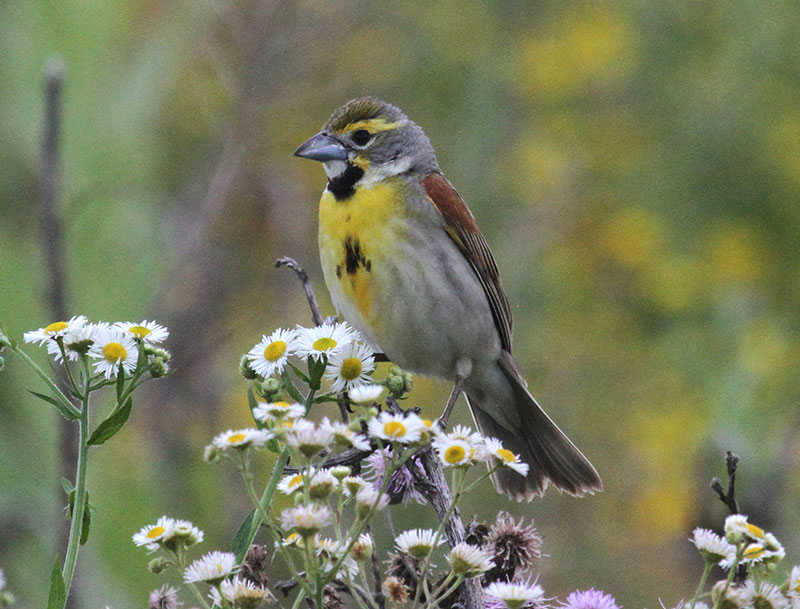2017 Dickcissel Irruption
7/9/17
By David Brown

Dickcissel
An above average number of dickcissels are being found in Pennsylvania this summer. The dickcissel is a species of grassland bird that nests primarily in the mid-western United States. Occasionally large numbers show up in the eastern United States, often related to drought in the core nesting range.
Beginning in early June birders in Pennsylvania and throughout the mid-Atlantic began to report unusual numbers of dickcissels. Most Pennsylvania sightings have been in large grasslands in the southern part of the state.

Dickcissel
The first indication to me of something unusual was on June 5th when my nocturnal flight call microphone recorded the call of a dickcissel as it flew over my house in Montoursville. By the end of the month I had recorded four more dickcissel calls, indicating that they are migrating through the area. However, there have been no daytime sightings in Lycoming county yet this year.
There are only a few records of dickcissels from our local area. One was reported near Lock Haven in November of 1987. Another was found in Cogan House township in June of 1988.
On June 26th dickcissels were found in a weedy field near Mill Hall in Clinton County and at least six have been observed simultaneously at that location and it is being observed as a possible nesting site.

Dickcissel
The dickcissel is the size of a large sparrow but it is actually in the cardinal family making it most closely related to our northern cardinal, indigo bunting, and scarlet tanager. Males have a yellow breast and face with a black V-shaped bib. The rest of the bird is gray overall with rufous patches. Females are similar in color but are more muted and lack the black bib.
Like many bird species, the name dickcissel comes from its song, which is a raspy “dick dick cissel cissel cissel,” sometimes with trills and whistles added.
The dickcissel is noted for undergoing large expansions and contractions of its nesting range. Breeding populations expanded into the mid-Atlantic and New England in the 19th century but the range had contracted again by the end of the century.

Dickcissel
Dickcissels are likely to be found locally in the same habitat as eastern meadowlarks and bobolinks, namely grasslands, weedy fields, and other early successional habitat. One danger grassland species face is having their nesting fields cut before the young have fledged. Landowners can make a positive difference by delaying mowing until the end of the nesting season. Dickcissels also face declines due to being considered a pest on their wintering grounds.
All local sightings of dickcissels are important enough to report and documenting successful nesting would be even more significant. Part of what makes birding fun is finding rare species and this summer may be the best opportunity in a while to observe dickcissels.